|
Home inspections are critical steps in buying or selling a property. Performing a home inspection offers valuable insight into a home's condition, allowing buyers to make informed decisions and sellers to identify areas for improvement.
One crucial aspect of a home inspection is defect analysis, which involves identifying and assessing any issues or deficiencies in various components of the property. In this comprehensive guide, we will delve into the intricacies of defect analysis inspections, offering valuable information for homeowners, buyers, sellers, and real estate professionals alike. Defect analysis inspection systematically evaluates a property's structural and functional elements to identify any defects, damages, or safety hazards. This process is typically conducted by a professional property inspector with the expertise to objectively assess various aspects of a property. The goal of defect analysis inspection is to provide a comprehensive report outlining the condition of the property and any areas that require attention or repair. Key Components of Defect Analysis Inspection Structural Integrity:
Exterior:
Interior:
HVAC Systems:
Insulation and Ventilation:
Safety Hazards:
Reporting and Recommendations: A detailed report is provided to the homeowner after the property inspector has completed the defect analysis assessment. This report typically includes:
Defect analysis inspection ensures a home's safety, functionality, and value. Whether buying, selling, or maintaining a property, investing in a comprehensive inspection can provide peace of mind and help you make informed decisions. By understanding the critical components of defect analysis inspection outlined in this guide, homeowners and real estate professionals can confidently navigate the process and ensure the integrity of residential properties.
0 Comments
As Dubai continues evolving into a modern architectural innovation marvel, the construction industry stands as its backbone, shaping the skyline with towering structures that define the city's identity.
However, amidst the awe-inspiring growth, the safety of construction workers remains a critical concern. Just as a thorough property snagging is essential for identifying potential hazards, a comprehensive approach to managing construction safety risks is paramount to ensure the well-being of workers and the success of projects in Dubai. Dubai's construction industry presents unique challenges, from extreme weather conditions to complex structural designs. These factors increase the likelihood of accidents if safety measures are not diligently enforced. Like uncovering hidden flaws during a home inspection, identifying and addressing safety risks early in construction projects is vital. Here are some common safety risks in Dubai's construction sector and strategies to prevent them: Height-related Hazards: With skyscrapers dotting the skyline, working at heights is commonplace in Dubai. Falls from elevated surfaces are among the leading causes of construction fatalities worldwide. Implementing stringent safety protocols, such as proper scaffolding, guardrails, and fall arrest systems, is crucial. Regular inspections, like a meticulous home inspection, ensure these safety measures remain intact and effective. Extreme Temperatures: Dubai's scorching temperatures pose significant health risks to construction workers, including heat exhaustion and heatstroke. Employers must provide adequate hydration stations, shaded rest areas, and mandatory breaks during peak heat hours. Additionally, outfitting workers with appropriate personal protective equipment (PPE), including lightweight, breathable clothing and wide-brimmed hats, can mitigate heat-related illnesses. Electrical Hazards: Electrical accidents constantly threaten construction sites, especially in Dubai's rapidly expanding urban landscape. Regular electrical inspections, akin to a home inspection's electrical assessment, can identify faulty wiring, overloaded circuits, or exposed electrical components. Moreover, ensuring workers receive comprehensive training on electrical safety protocols is essential to prevent accidents. Crane Safety: Cranes are indispensable in Dubai's construction projects, facilitating the vertical growth of skyscrapers. However, improper operation or maintenance can lead to catastrophic accidents. Routine crane inspections, including load testing and structural assessments, are imperative. Additionally, ensuring operators are adequately trained and certified enhances overall safety on the site. Structural Integrity: Dubai's ambitious architectural endeavors demand meticulous attention to structural integrity. Like a snagging inspection scrutinizing a building's foundation, engineers must thoroughly assess construction materials and techniques to ensure stability and resilience against environmental factors like sandstorms and seismic activity. Material Handling: Mishandling of construction materials poses risks to workers, bystanders, and neighboring properties. Implementing proper material storage protocols, including secure stacking and labeling, reduces the likelihood of accidents. Regular inspections of material handling equipment, such as forklifts and cranes, ensure they remain in optimal working condition. Communication Barriers: Dubai's construction sites are often melting pots of diverse nationalities and languages, leading to potential miscommunication and misunderstandings that can compromise safety. Implementing multilingual signage, providing language-specific safety training, and fostering a culture of clear communication can bridge these gaps and enhance overall safety. In conclusion, managing construction safety risks in Dubai requires a proactive approach akin to conducting a meticulous certified property inspection. By identifying potential hazards early, implementing robust safety protocols, and conducting regular inspections, stakeholders can foster a culture of safety that protects workers and ensures the successful completion of projects. Just as a sturdy foundation is essential for a secure home, prioritizing safety in construction lays the groundwork for a thriving and resilient built environment in Dubai. Are you considering purchasing an older home with charm and character? While older homes exude a unique appeal, they often come with challenges that buyers must be aware of. From hidden structural problems to outdated systems, a thorough inspection is essential before deciding. In this blog post, we'll explore some common issues to watch out for when purchasing an older home, emphasizing the importance of a comprehensive commercial building inspection.
Foundation Concerns: One of the primary concerns with older homes is the foundation's condition. Over time, foundations can settle, crack, or deteriorate, leading to structural instability. If you find cracks in the walls or uneven floors during a home inspection, you may have foundation problems. Outdated Electrical Wiring: Older homes may have outdated electrical systems that don't meet modern safety standards. Knob-and-tube wiring or aluminum wiring, common in homes built before the 1960s, can pose fire hazards and may need to be replaced. A qualified inspector can assess the condition of the wiring and recommend necessary upgrades. Plumbing Issues: Older homes may have plumbing systems nearing the end of their lifespan. Water pressure and quality can be affected by corrosion in galvanized steel pipes used in older homes. Additionally, outdated fixtures and pipes may lead to leaks or other plumbing issues that must be addressed. Roofing Problems: The roof is another area where older homes may have issues. Missing or damaged shingles, sagging roofs, or signs of water damage can indicate the need for repairs or replacement. A certified property inspection of the roof can help identify any potential issues and estimate the remaining lifespan. Pest Infestations: Older homes are more susceptible to pest infestations due to structural gaps, aging wood, and other factors. Common pests such as termites, rodents, and ants can cause extensive damage without treatment. An inspector can look for signs of pest activity and recommend appropriate measures to address the infestation. Asbestos and Lead Paint: Homes built before the 1980s may contain asbestos in insulation, flooring, or ceiling tiles, as well as lead-based paint on walls or trim. Both asbestos and lead paint pose serious health risks if disturbed or ingested. A specialized inspector can test for the presence of these hazardous materials and advise on safe removal or containment measures. HVAC System: Older homes may have outdated heating, ventilation, and air conditioning (HVAC) systems that are inefficient or need repair. Inspecting the HVAC system can identify any issues and help determine if upgrades or replacements are necessary to ensure comfort and energy efficiency. To conclude, buying an older home can be a rewarding experience, but you should be aware of potential issues. A detailed snagging inspection conducted by a qualified inspector is crucial to identify any hidden problems and ensure you're making an informed decision. By addressing these common issues upfront, you can enjoy your older home with peace of mind, knowing it's safe, comfortable, and structurally sound. ENSURING SAFETY: A Guide to Verifying Your Pool's Bonding for Protection Against Electric Shock2/16/2024 As we approach the warmer months, thoughts of poolside relaxation and family fun begin to fill our minds. While a swimming pool can be a source of joy and entertainment, it's crucial to prioritize safety, especially concerning electrical hazards. Electric shock incidents around pools can have devastating consequences, but with proper precautions and regular maintenance, these risks can be significantly minimized.
Understanding Pool Bonding: Before diving into the verification process, let's understand what pool bonding entails. Pool bonding involves connecting all metal components within and around the pool area to ensure they are at the same electrical potential. This helps to prevent electrical shocks in the event of a fault in the pool's electrical system. 1. Regular Inspections: Regular Certified property inspection of your pool's bonding system are crucial for ensuring its effectiveness. Inspect all metal components for signs of corrosion, damage, or loose connections. Pay close attention to areas where metal components meet, as these junctions are prone to corrosion and can weaken the bonding connection. 2. Testing the Bonding System: Testing the bonding system is a critical step in verifying its effectiveness. Use a pool bonding tester, also known as a "megger," to measure the resistance between various metal components and the pool's bonding grid. Ideally, the resistance should be very low, typically less than one ohm. Higher resistance indicates poor bonding and may require further investigation and repairs. 3. Proper Installation: Ensure that all metal components are correctly installed and connected to the bonding grid according to manufacturer specifications and local building codes. Improper installation can compromise the effectiveness of the bonding system and increase the risk of electric shock incidents. 4. Address Issues Promptly: If you encounter any issues during the residential property inspection or testing process, address them promptly. Repair or replace damaged or corroded metal components, tighten loose connections, and verify that all components are correctly bonded. Ignoring problems with the bonding system can pose significant safety risks to pool users. 5. Seek Professional Assistance: If you're unsure about how to verify your pool's bonding system or encounter complex issues during the inspection process, don't hesitate to seek professional assistance. Certified electricians or pool maintenance professionals can provide expert guidance and ensure that your pool's bonding system meets safety standards. 6. Educate Pool Users: Finally, it's essential to educate pool users about electrical safety practices. Remind them never to swim during thunderstorms, avoid using electrical appliances near the pool, and immediately report any signs of electrical malfunction or shock. In conclusion, ensuring the safety of your pool's bonding system is crucial for protecting against electric shock incidents. By understanding the basics of pool bonding, conducting property snagging inspections , testing the bonding system, addressing issues promptly, seeking professional assistance if necessary, and educating pool users about electrical safety, you can create a safer swimming environment for yourself, your family, and your guests. Prioritizing safety will allow everyone to enjoy the pool with peace of mind and reduce the risk of accidents and injuries. Home enhancement projects can be an exciting adventure with dreams of a beautiful, renovated space. However, sometimes things don't go as planned, leading to unexpected and often hilarious mishaps that leave homeowners in disbelief. From DIY disasters to surprising encounters with nature, here are 13 side-splitting home improvement mishaps that will make you chuckle.
The Paint Spill Fiasco: Picture this: you've just finished painting your living room a beautiful shade of blue when, in a moment of clumsiness, you trip over a paint can and send it flying across the room. Cue the frantic scramble to contain the spill before it transforms your carpet into a modern art masterpiece. The Crooked Shelf Debacle: Installing shelves may seem straightforward, but one homeowner discovered that measuring twice doesn't always prevent a crooked shelf. Despite their best efforts, each attempt to straighten it out only seemed to make it worse, resulting in a leaning tower of books. The Plumbing Predicament: Attempting to fix a leaky faucet can quickly spiral into a plumbing nightmare. One homeowner found themselves knee-deep in water after a simple DIY repair went awry, prompting a frantic call to the plumber and a hefty repair bill. The Wallpaper Woes: Installing wallpaper requires patience, precision, and a steady hand – three things one homeowner severely lacked. Their attempt at DIY wallpapering resulted in a lopsided mess with air bubbles galore, leading them to reconsider their interior decorating skills. The Mysterious Hole: While attempting to hang a picture frame, one homeowner accidentally drilled into a hidden pipe behind the wall, unleashing a geyser of water that flooded the room within seconds. Knowing your home's infrastructure is as important as knowing how to hang a picture. The Tangled Wires Tango: Setting up a new entertainment system can quickly become a mess of wires and confusion. One homeowner spent hours deciphering the maze of cables, only to realize they had mixed up the inputs and outputs, resulting in a frustrating game of trial and error. The Window Mishap: Replacing a broken window pane seemed simple until one homeowner accidentally shattered the entire window frame. Cue the panicked rush to find a temporary solution before the neighbors caught a glimpse of their handiwork. The Stubborn Screw: Sometimes, a seemingly straightforward task like tightening a screw can turn into an epic battle of strength and determination. One homeowner found themselves locked in a heated struggle with a stubborn screw that refused to budge, leaving them questioning their ability to handle even the simplest of tasks. The Rogue Hammer: Remodeling your kitchen can be rewarding, but it can also create unexpected problems – like accidentally launching a hammer across the room and denting your brand-new refrigerator. It's incredible how quickly a moment of clumsiness can turn a DIY project into a comedy of errors. The Potted Plant Plight: Attempting to add a touch of greenery to your home can quickly go awry when you forget to put a drainage tray under your potted plant. One homeowner learned this the hard way when their attempt at indoor gardening resulted in a muddy mess on their pristine hardwood floors. The DIY Disaster: DIY projects can be a smart way to save money and add personal touches to your house, but they can also lead to unexpected disasters. One homeowner's attempt at building a deck turned into a comedy of errors, with crooked boards, wobbly handrails, and a final product that resembled more of a pirate ship than a place to relax outdoors. The Birdhouse Blunder: Installing a birdhouse to attract feathered friends to your yard may seem harmless, but one homeowner quickly realized they had made a grave mistake when a family of raccoons moved in instead. Not all visitors are welcome in the world of backyard birdwatching. The Fence Fiasco: Erecting a fence can be a great way to add privacy and security to your home, but it can also lead to unexpected challenges. One homeowner's attempt at DIY fencing ended in disaster when they accidentally built it several feet onto their neighbor's property, resulting in a not-so-friendly visit from the local authorities. In conclusion, home development projects can be a source of pride and amusement, with plenty of opportunities for hilarious mishaps. However, it's essential to prioritize safety and avoid potential disasters by conducting thorough certified property inspections before embarking on renovation endeavors. Whether it's checking for hidden pipes before drilling or assessing the structural integrity of walls before hanging heavy objects, a comprehensive inspection can prevent costly and unexpected mishaps down the road. So, while laughter may indeed be the best remedy for some home improvement woes, ensuring a solid foundation through property inspection is equally crucial. Embrace the chaos of DIY projects, but do so with the reassurance of a well-inspected home because, in the end, it's all part of the homeowner experience. Purchasing a home is a monumental decision, often representing one of the most significant investments in a person's lifetime. Whether it's a cozy apartment in the city's heart or a spacious suburban house with a backyard, buying a home involves careful consideration and evaluation. Among the essential steps in this process is the certified property inspections—an in-depth examination that can uncover potential issues and provide invaluable insights into the property's condition.
Home inspections are a vital safeguard for prospective buyers, offering a comprehensive assessment of the property's structural integrity, safety, and overall condition. While the idea of a dream home may be enticing, the reality is that even seemingly perfect properties can harbor hidden problems that may not be apparent to the untrained eye. From hidden water damage to faulty electrical systems, the list of upcoming issues can be extensive, underscoring the importance of a thorough inspection before finalizing any purchase. One of the primary benefits of a home inspection is its ability to reveal any underlying issues that could pose significant problems in the future. Structural deficiencies, such as foundation cracks or roof damage, can undermine the integrity of the entire property and lead to expensive repairs. By finding these issues early on, buyers can make informed decisions and negotiate smartly with the seller, potentially saving themselves from financial burdens in the future. Moreover, residential property inspection allows buyers to understand better the property they intend to purchase. Inspectors can educate buyers about the home's various systems, including plumbing, HVAC, and electrical, highlighting any maintenance requirements or potential areas of concern. With this knowledge, buyers can better assess whether the property aligns with their expectations and long-term goals, ensuring they make a sound investment that meets their needs. Property snagging is crucial in assessing the property's physical condition and identifying potential health and safety hazards. Issues such as mold growth, asbestos, or lead-based paint pose significant risks to occupants' health and well-being. A thorough inspection can detect these hazards and prompt necessary remediation measures to ensure a safe living environment for the new occupants. Furthermore, home inspections can uncover hidden costs that may take time for buyers. While a property may appear well-maintained on the surface, underlying issues discovered during an inspection can impact its value and future maintenance expenses. Buyers can budget accordingly and avoid unforeseen financial strain after purchasing the property by understanding the full scope of potential repairs or upgrades. It's essential to recognize that property snagging benefits both buyers and sellers. By proactively conducting a pre-listing inspection, sellers can identify and address any issues beforehand, increasing the appeal of their property and potentially expediting the sale process. A transparent inspection approach demonstrates honesty and integrity, fostering trust between sellers and buyers and facilitating smoother negotiations. In conclusion, snagging inspection are an indispensable part of home buying, offering numerous benefits for buyers and sellers. From uncovering hidden issues to ensuring health and safety compliance, inspections provide invaluable insights that inform decision-making and mitigate risks associated with purchasing a property. Buyers can gain peace of mind by investing in a comprehensive inspection, knowing they are making a well-informed investment in a property that meets their needs and expectations. 11 Untruths You Must Avoid While Marketing Your Home for Sale || Insights from Home Inspections2/7/2024 Selling your home can be daunting, especially when considering all the factors that come into play. From setting the right price to staging your property, there's much to consider. However, one often overlooked aspect of the selling process is the role of home inspections.
These certified property inspection provide valuable insights into the condition of your home, but they also debunk several misconceptions that could hinder your marketing efforts. Here are 11 untruths you must avoid when marketing your house for sale, based on insights from home inspections: "My Home Doesn't Need an Inspection Because It's New": Even newly constructed homes can have hidden issues. From faulty wiring to poor craftsmanship, a thorough inspection can uncover potential problems that may not be immediately apparent. "I Can Hide Flaws During Showings": Trying to conceal defects during showings is unethical and risky. A home inspection will likely reveal any hidden flaws, which could lead to distrust from potential buyers and derail the sale. "Minor Issues Won't Affect the Sale": While minor issues may seem insignificant, they can still impact the sale of your home. Addressing these issues before listing your property can improve its overall appeal and increase its value. "Buyers Won't Care About Cosmetic Damage": Cosmetic damage, such as chipped paint or worn-out carpeting, may seem trivial, but it can turn off potential buyers. A home inspection can help identify areas that need attention, allowing you to make necessary repairs or adjustments. "I Can Skip Repairs If I Disclose Them": While disclosing known issues is essential, it's not a substitute for making necessary repairs. Neglecting repairs can deter buyers and lead to prolonged negotiations or a failed sale. "Home Inspections Are Only for Buyers": Sellers can also benefit from Commercial Property Inspection. By proactively identifying and addressing issues, sellers can enhance their property's marketability and potentially command a higher selling price. "I Don't Need to Prepare for the Inspection": Preparing your home for inspection is crucial. Simple tasks like cleaning, decluttering, and ensuring easy access to utility areas can make the inspection process smoother and leave a positive impression on the inspector and potential buyers. "I Can Rely Solely on the Home Inspector's Report": Home inspectors provide valuable insights but may not catch every issue. Sellers need to conduct their thorough assessment and address any concerns the inspector raises. "I Shouldn't Attend the Inspection": Sellers often think it's best to stay away during the inspection, but being present allows you to address any questions or concerns directly. It also demonstrates transparency and a willingness to cooperate, which can build trust with potential buyers. "I Can't Negotiate After the Inspection": The residential property inspection report can be a valuable negotiation tool. Sellers should be prepared to discuss the findings with potential buyers and come to a mutually beneficial agreement on repairs or pricing adjustments. "Once the Inspection Is Done, I'm in the Clear": Even after the inspection is complete, sellers should remain vigilant. New issues may arise, or previously identified issues may require additional attention. Staying proactive throughout the selling process is key to a successful transaction. In conclusion, home inspections play a crucial role in the selling process and can debunk several misconceptions that sellers may have. By avoiding these untruths and proactively addressing any issues, sellers can enhance their property's marketability and increase the likelihood of a successful sale. So, before you put your home on the market, consider the insights from home inspections and approach the process with clarity and transparency. Selecting an aspect often overlooked by sellers is the pre-listing inspection. Opting for a property snagging before putting your house on the market can be a strategic move, helping you identify and address issues that might arise during negotiations with potential buyers. To ensure you choose the right pre-listing inspector for the job, follow these tips and guidelines.
What is a pre-listing inspection? A pre-listing inspection involves a comprehensive evaluation of your home's condition before you list it for sale. Certified home inspectors thoroughly examine various aspects of your property, identifying any potential problems that may affect its value or appeal to buyers. This approach typically takes a few hours, depending on the size and complexity of your home. The goal is to address issues proactively, increase your home's market value, and streamline the selling process. Why do you need one? A pre-listing inspection serves multiple purposes. Firstly, it provides peace of mind by allowing you to address issues before listing, minimizing surprises during negotiations. Furthermore, it can be a marketing tool for attracting more potential buyers, showcasing a well-maintained property to speed up the sale process. Thirdly, it builds transparency and trust with prospective buyers, reducing the likelihood of deals falling through due to unforeseen problems. In essence, a pre-listing inspection is an investment that pays off by reducing stress, accelerating sales, and ensuring confident decision-making. How to choose a pre-listing inspector Hiring a pre-listing inspector is crucial, and conducting thorough research is essential. Ask friends, family, or local real estate brokers for recommendations to compile a list of potential inspectors. Look for inspectors certified by reputable organizations like InterNACHI or ASHI, and read testimonials from previous clients to gauge their professionalism and service quality. Before making a decision, inquire about the inspection cost and the specifics of the provided report. A comprehensive report should document necessary repairs and offer suggestions to enhance your property's value. Choosing an experienced pre-listing inspector ensures you save time and money, avoid unpleasant surprises, and present your property in optimal condition for potential buyers. What will the inspection cover? A Professionals property inspector will meticulously evaluate your property during a pre-listing inspection. This includes thoroughly examining significant systems such as the roof, HVAC, plumbing, and electrical wiring. Structural components like walls, ceilings, and floors are scrutinized for damage or defects. Specialized tools like thermal cameras or moisture meters may be employed to identify hidden issues. In addition to identifying existing problems, the inspector may recommend repairs or upgrades to enhance your property's value and marketability. A pre-listing inspection ensures you've done everything necessary to make your property ready for sale, increasing the likelihood of attracting interested buyers. How to prepare for the inspection? Preparing for a pre-listing inspection is crucial for a positive outcome. Ensure your home is easily accessible and free from clutter, removing personal belongings and creating clear paths. Address minor repairs and maintenance issues beforehand, as even seemingly small details like burned-out light bulbs can impact a visitor's perception of your home. Provide documentation for recent improvements or repairs, such as repair invoices, warranties, and records of routine maintenance services. Be ready to answer the inspector's questions about your home's history, structural changes, and significant systems. Following these simple tips will increase the chances of receiving a favorable report from your pre-listing inspector. What to do after the inspection? After the pre-listing inspection, carefully review the detailed report provided by the inspector. Identify areas that require repairs or renovations and address them promptly to ensure your home is in optimal condition before listing. Transparency is key, so be honest with potential buyers about minor issues that couldn't be resolved before listing. In conclusion, choosing a qualified pre-listing inspector is crucial in selling your home. By following these tips, conducting thorough research, and being proactive in addressing issues, you will find a reliable and well-versed professional who can provide crucial insight into the condition of your property. This investment in Snagging companies in Dubai will benefit you as a seller and instill confidence in potential buyers, making your dwelling more appealing in the competitive real estate market. The Importance of Professional Home Inspections in the Strategic Approach of Successful Realtors2/2/2024 In the fast-paced world of real estate, successful realtors understand that a strategic approach goes beyond just closing deals. One essential element distinguishing the best real estate professionals is their recognition of the importance of residential property inspection. These inspections are pivotal in ensuring transparency, building trust, and ultimately, achieving long-term success in the industry.
1. Building Trust Through Transparency Professional home inspections offer a transparent and unbiased evaluation of a property's condition. In an industry where trust is paramount, providing potential buyers with a comprehensive report from a qualified inspector demonstrates the realtor's commitment to honesty and integrity. Buyers appreciate the transparency and are more likely to trust realtors who prioritize their clients' interests over a quick sale. By encouraging home inspections, realtors send a strong message to both buyers and sellers that they are invested in a fair and honest transaction. This commitment to transparency builds a positive reputation that pays dividends through client referrals and repeat business. 2. Mitigating Risks for Clients Real estate transactions involve significant financial investments, and clients rely on their realtors to guide them through the process with minimal risk. A professional home inspection acts as a risk mitigation tool, identifying potential issues that may not be visible during a routine walkthrough. Realtors who advocate for thorough commercial property inspection are committed to their clients' long-term satisfaction. Identifying and addressing issues early can prevent disputes and protect clients from unforeseen expenses. This proactive approach safeguards clients' investments and enhances the realtor's credibility. 3. Streamlining Negotiations Successful realtors understand that negotiations are a delicate dance. A comprehensive home inspection report provides a clear picture of a property's condition, empowering realtors to negotiate confidently. With this information, realtors can navigate discussions more effectively, addressing concerns and finding solutions that satisfy buyers and sellers. Moreover, being proactive about home inspections can expedite the closing process. By identifying potential roadblocks early on, realtors can work with their clients to address issues promptly, preventing delays and ensuring a smoother transaction. 4. Enhancing Professionalism and Market Standing In an industry where professionalism is vital, realtors prioritizing home inspections distinguish themselves as thorough and detail-oriented professionals. This commitment to excellence sets them apart and contributes to their long-term success. By consistently advocating for professional home inspections, realtors position themselves as trusted advisors who prioritize their client's best interests. This commitment resonates with clients and can lead to increased referrals and positive reviews, bolstering the realtor's standing in the market. In the dynamic world of real estate, successful realtors recognize that a strategic approach goes beyond closing deals—fostering trust, mitigating risks, streamlining negotiations, and enhancing professionalism. Certified property inspections play a central role in this strategic approach, offering a transparent evaluation, mitigating risks for clients, facilitating negotiations, and ultimately contributing to a realtor's long-term success. As the real estate landscape continues to evolve, realtors who embrace the importance of professional home inspections are better positioned to thrive in an increasingly competitive market. |
AuthorWrite something about yourself. No need to be fancy, just an overview. Archives
July 2024
Categories
All
|

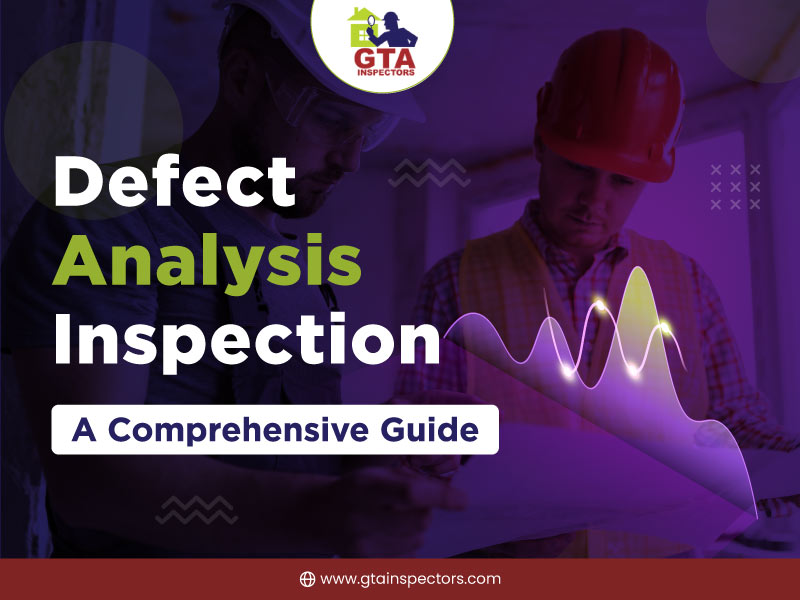
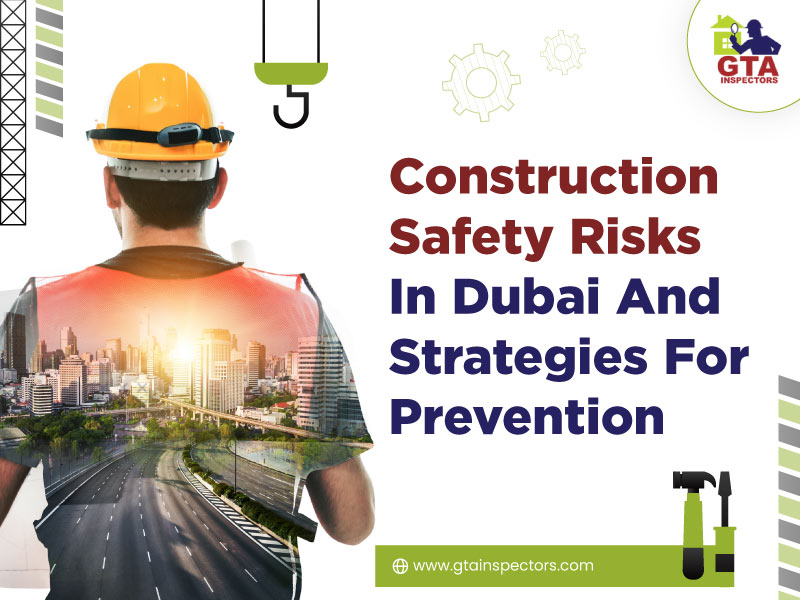
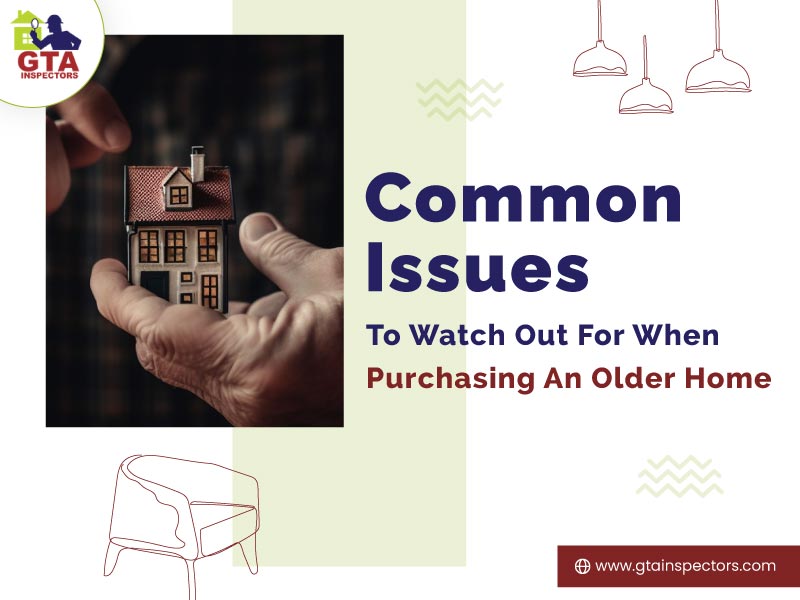
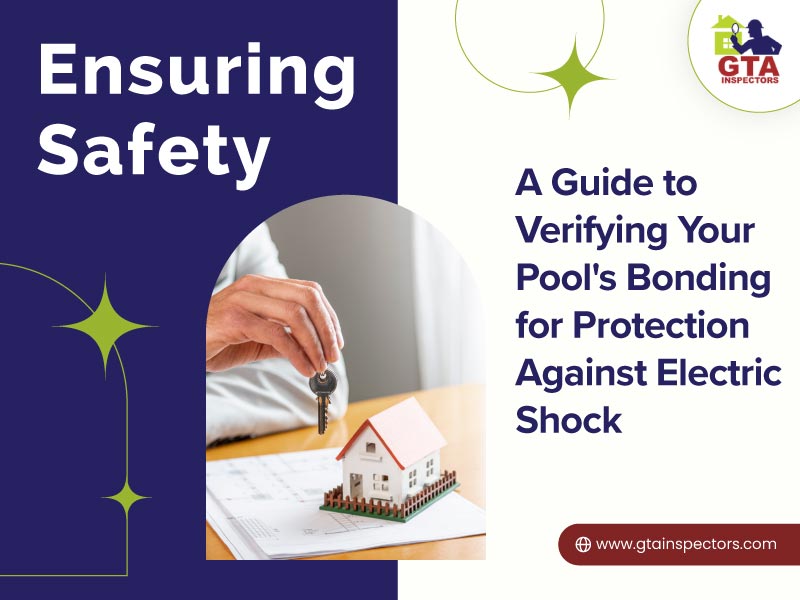

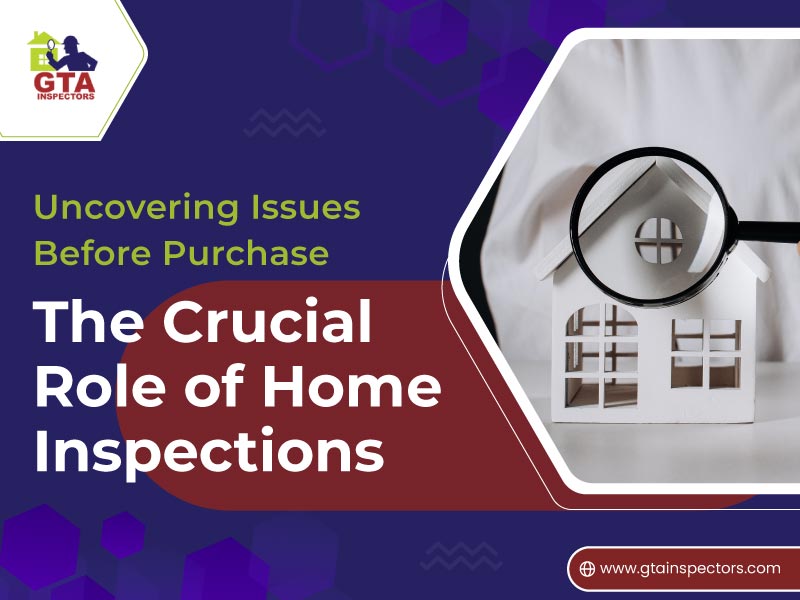



 RSS Feed
RSS Feed
